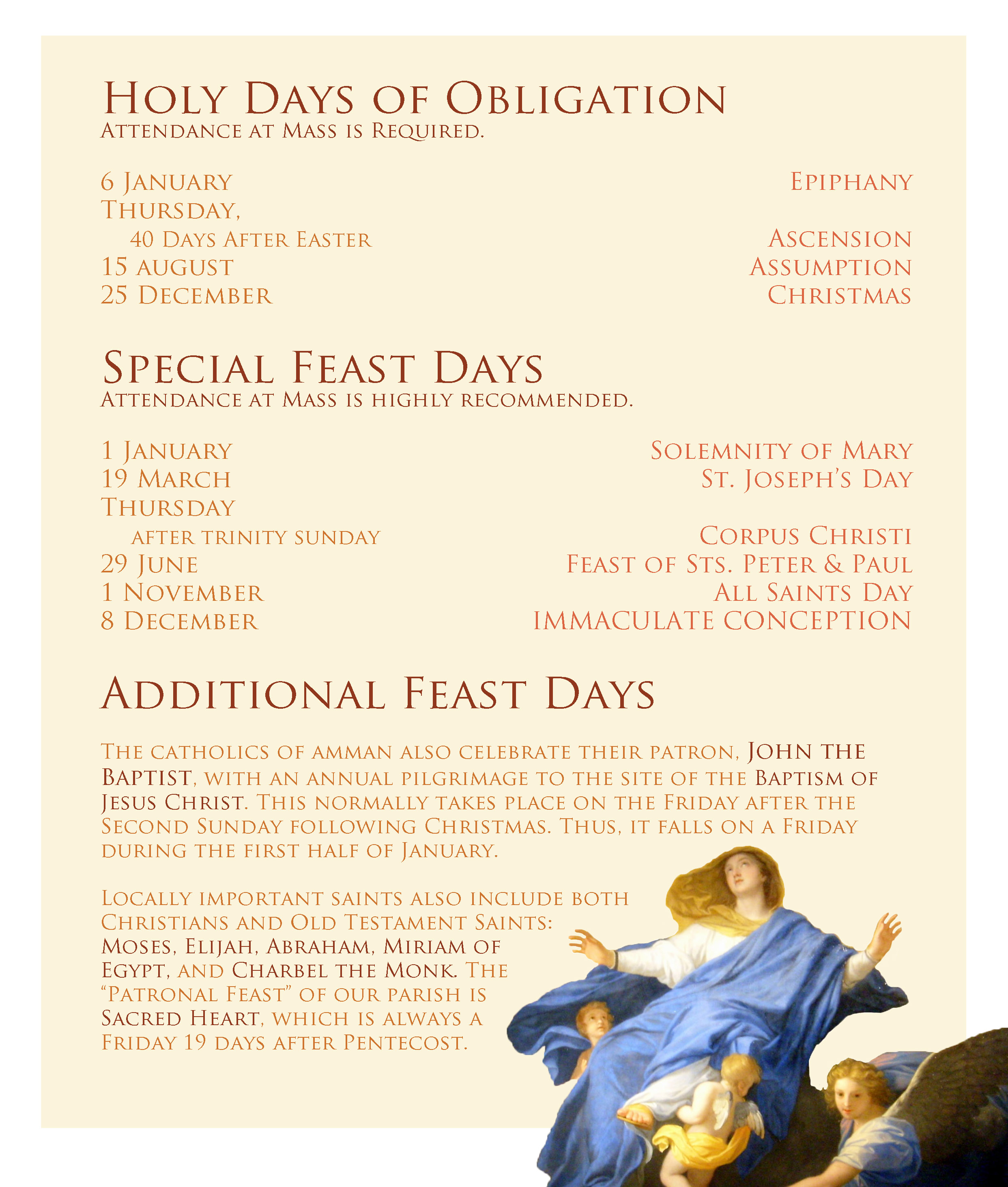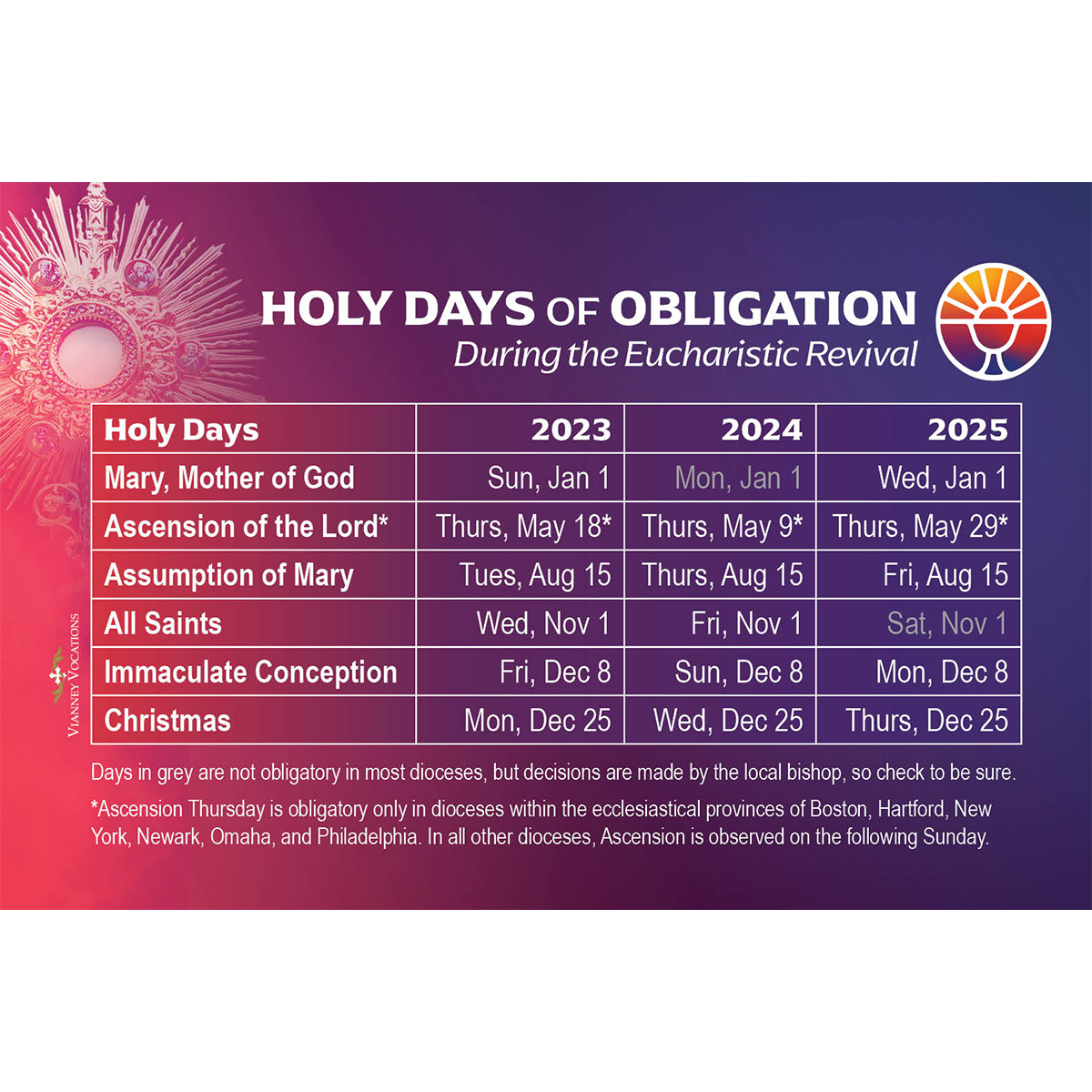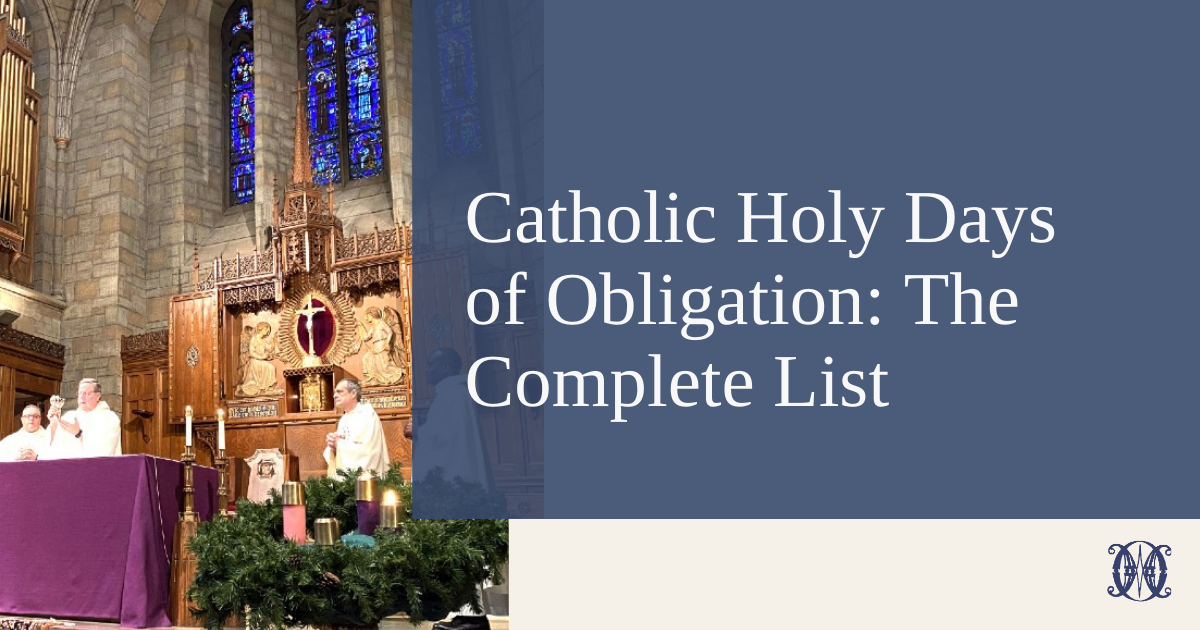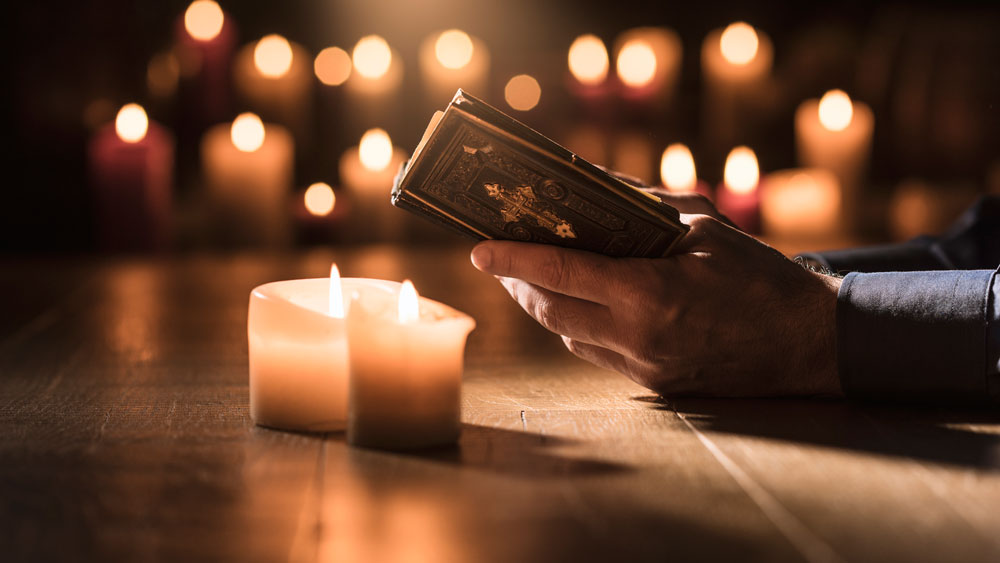Understanding the Catholic Holy Days of Obligation in 2025
Related Articles: Understanding the Catholic Holy Days of Obligation in 2025
Introduction
With enthusiasm, let’s navigate through the intriguing topic related to Understanding the Catholic Holy Days of Obligation in 2025. Let’s weave interesting information and offer fresh perspectives to the readers.
Table of Content
Understanding the Catholic Holy Days of Obligation in 2025

The Catholic Church designates certain days throughout the year as Holy Days of Obligation, emphasizing their significance in the liturgical calendar. These days are not merely holidays, but rather occasions for the faithful to participate in the celebration of the Church’s most important mysteries.
The Importance of Holy Days of Obligation
The observance of Holy Days of Obligation stems from the Church’s desire to foster a deeper connection with Christ and his teachings. It serves as a reminder of the pivotal events in the life of Jesus, the Virgin Mary, and the saints, encouraging reflection and spiritual renewal. These days provide opportunities for:
- Active participation in Mass: Attendance at Mass on Holy Days of Obligation is a fundamental requirement for Catholics. It serves as a tangible expression of faith and a means of receiving grace through the sacraments.
- Devotion and prayer: Beyond Mass, these days encourage deeper personal prayer and reflection on the mysteries celebrated. They offer a chance to delve into Scripture, engage in spiritual reading, and dedicate time to contemplation.
- Solidarity with the Church: Observing Holy Days of Obligation strengthens the bonds of unity within the Catholic community. It fosters a shared experience of faith and reinforces the collective commitment to the teachings of the Church.
The 2025 Calendar of Holy Days of Obligation
The specific dates of Holy Days of Obligation can vary slightly based on local customs and the Gregorian calendar. However, the following days remain consistent for most Catholic dioceses:
- January 1: Solemnity of Mary, Mother of God
- Ascension Thursday: Celebrated on the Thursday after Pentecost, marking Jesus’ ascension into heaven.
- August 15: Assumption of the Blessed Virgin Mary
- November 1: All Saints Day
- December 8: Solemnity of the Immaculate Conception
- December 25: Solemnity of the Nativity of the Lord
Understanding the Exemptions and Obligations
While participation in Mass on Holy Days of Obligation is generally expected, certain exceptions exist:
- Serious illness or disability: Individuals unable to attend Mass due to health concerns are exempt from this obligation.
- Care of the sick or infirm: Those caring for the sick or infirm are also exempt.
- Work or travel: While these factors do not automatically exempt individuals, they may be considered in specific cases, especially if attending Mass would be impossible or pose a significant hardship.
FAQs about Catholic Holy Days of Obligation in 2025
1. What time does the obligation to attend Mass begin and end?
The obligation to attend Mass on Holy Days of Obligation typically begins at the start of the day and ends at the end of the day, according to the local time zone. This means that attending Mass at any point during the day fulfills the obligation.
2. Can I attend Mass at a different parish on a Holy Day of Obligation?
Yes, attending Mass at any Catholic parish on a Holy Day of Obligation fulfills the obligation. This flexibility allows for greater convenience and accessibility for individuals who may be traveling or living away from their usual parish.
3. What if I am unable to attend Mass due to unforeseen circumstances?
If you are unable to attend Mass due to unforeseen circumstances, it is recommended to make a spiritual communion, which is a prayerful act of uniting oneself with Christ in the Eucharist.
4. How can I best prepare for a Holy Day of Obligation?
Preparing for a Holy Day of Obligation involves a combination of spiritual and practical steps. This includes:
- Reflection and prayer: Dedicate time to reflect on the meaning of the day and pray for the graces associated with it.
- Spiritual reading: Explore Scripture readings and other relevant spiritual materials related to the day’s theme.
- Confession: Consider going to confession to prepare your heart for receiving the sacraments.
Tips for Observing Holy Days of Obligation
- Plan ahead: Schedule time for attending Mass and other devotional activities.
- Involve your family: Encourage family members to participate in the celebration and create meaningful traditions.
- Share the joy: Invite friends and neighbors to join you in celebrating the day.
- Make a difference: Consider volunteering or performing acts of charity to honor the day’s significance.
Conclusion
Observing Holy Days of Obligation is an essential part of the Catholic faith. These days provide a unique opportunity to deepen our relationship with God, celebrate the Church’s most important mysteries, and express our commitment to the teachings of Christ. By actively participating in the liturgical celebrations and engaging in personal reflection, we can enrich our spiritual lives and strengthen our connection to the Catholic community.








Closure
Thus, we hope this article has provided valuable insights into Understanding the Catholic Holy Days of Obligation in 2025. We appreciate your attention to our article. See you in our next article!
